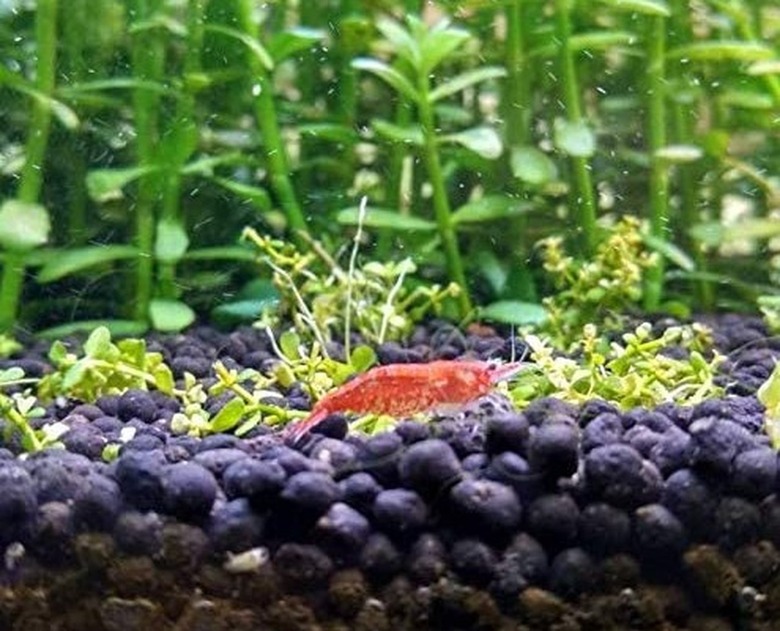How To Cut Back Bacopa
We may receive a commission on purchases made from links.
The bacopa plant (Bacopa spp.) in your garden, also known as water hyssop, brahmi, and herb of grace, is one of 70 to 100 species of tropical wildflowers that thrive in U.S. Department of Agriculture plant hardiness zones 6 through 11 depending on the species. These evergreen flowering plants thrive in boggy soils, water gardens, hanging baskets, and aquariums. Use caution when cutting back bacopa near marshes and along waterways; the plant is easily propagated from cuttings and can become invasive in warm, tropical climates.
About Bacopa Plants
About Bacopa Plants
Lemon bacopa (Bacopa caroliniana) is one of several bacopa species found in the lower coastal plains of the Southeast, from Virginia to Florida and as far west as Texas. Hardy in USDA zones 6 through 9, it features blue flowers, hence the common name "blue hyssop," and fleshy, succulent leaves that smell like lemon, anise, or mint when crushed. It is used in hobby aquariums and indoor water gardens as well as a ground cover in boggy sites and in garden ponds.
Water hyssop (Bacopa monnieri), also known as moneywort, prefers the warmer climates of USDA zones 8b through 11. It thrives in full sun and partial shade in moist to wet soils in subtropical and tropical North and South America, India, and Southeast Asia. The 2/3-inch-wide flowers are white and lightly tinged with pink or blue, and they bloom from spring through fall. Unlike other bacopa plants, crushing the thick 1/2-inch-long and 1/4-inch-wide leaves does not release a pleasant scent.
The other plant known as the bacopa plant, Sutera cordata, is a member of the genus Sutera. It is also a water-loving species that thrives in USDA zones 8 through 11. This trailing plant is grown in baskets or as a ground cover. The 1 1/2-inch-wide, heart-shaped green or gold and green variegated leaves and small white, pink, blue, or lavender flowers make it an attractive addition to the porch or garden.
Bacopa Care in the Garden
Bacopa Care in the Garden
The Bacopa and Sutera plant species have similar growing and care requirements. Both require consistently moist soil and partial to full sun, but the Bacopa species will grow in shallow water as well as very wet soils. Fill a wire hanging basket with an all-purpose potting mix or a combination of equal parts peat moss or coconut coir, perlite, and compost. Soak the entire basket — moss, soil, and all — in a bucket of water to ensure that it is soaked through.
Plant the bacopa in the moist soil in the basket or a flowerpot. Fertilize with a liquid fertilizer for flowers diluted to one-half strength every seven to 10 days. Water daily if necessary, whether in a hanging basket or flowerpot, to keep the potting mix moist.
If planting in the garden or a pond, choose a consistently moist location or tuck Bacopa species cuttings into the muddy shallows of the pond. Sutera species plants grow better in moist but well-drained soils; water when the soil is dry to a depth of 1 inch. Keep the plants' roots moist at all times; both of these water-loving flowers will die if the soil dries out. Add a shovelful of compost around the plants monthly.
Bacopa Plant Propagation
Bacopa Plant Propagation
The Bacopa species tends to grow larger when submerged, with up to 1-foot-long stems and shorter branches rising above the water. The trailing stems produce roots along their nodes on moist soil and in water. Sterilize your cutting tools by dipping the blades into rubbing alcohol and then snip off the excess growth. Place the cuttings in water or wet potting mix to start new plants.
The Sutera species should be pinched back to encourage healthy growth. Trim the stems back to 5 or 6 inches when the plant starts looking leggy, usually midsummer. Root the cuttings or dig up and divide mature plants into sections, each with roots and a few leaves, and then replant in the garden, flowerpot, or hanging basket.
Deadhead bacopa plants by removing spent blossoms before they set seed. Put the trimmings in the green bin or on top of the compost pile to dry out for a few days before turning the pile.
References
- University of Florida IFAS Extension: Lemon Bacopa: Bacopa caroliniana
- North Carolina Extension Gardener Plant Toolbox: Bacopa monnieri
- Costa Farms: Bacopa – Sutera spp.
- MasterClass: Bacopa Plant Guide: How to Grow Bacopa
- Better Homes & Gardens: Bacopa
- Lady Bird Johnson Wildflower Center: Bacopa monnieri
